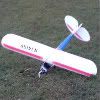Post by Dillzio on Feb 24, 2012 10:55:52 GMT 1
I have a very important tip and trick for anyone new to the hobby, or anyone who may have become so used to using lipos that they've become more complacent and less afraid than they should be.
If you connect a 3S lipo to your charger, and you accidentally have your charger set to 4S, the battery will catch fire. I've always known it, but now that I've experienced it for myself this fact of life has taken on a whole new meaning for me.
Sometimes you may be lucky enough to get an error message on your charger when such mistakes are made, but in some circumstances (such as when you're least expecting it) it is possible to starting a charging cycle with the charger set to 4S. This is because a 3S lipo flown down to a healthy 3.8v per cell still has enough voltage for the charger to think it's actually a dead flat 4S battery. In my case, it occurred because I connected a full 3S lipo and set it to discharge to storage voltage (3.8v per cell), but since it was set to 4S it ended up trying to charge my lipo up to 15.2v and it didn't like it.
I didn't have the balance lead connected, I'm not sure if that would have allowed my charger to detect the error or not.
So, lessons learned are as follows:
Always check and double check that you have selected the correct number of cells for your lipo. If you try to charge a 2S at 3S rates, or try to charge a 3S at 4S rates, you will start a fire. You only need a 0.1% failure rate and you will start a fire eventually (it took me 3 years)
Always have the balance connector connected to the charger, even if you're only discharging to storage voltage.
Always charge your lipos in a 'lipo safe' flameproof bag, and use a temperature probe if your charger supports that feature (all B6 charges do).
Never leave lipos to charge unattended (which is probably the main reason it only burnt the contents of one drawer, instead of the whole room)
This is what happens when a Lipo is left to charge in a drawer, without a flameproof lipo bag or a temperature probe connected - I mean who ever thinks to use the temperature probe when you're discharging a lipo for storage?
If you connect a 3S lipo to your charger, and you accidentally have your charger set to 4S, the battery will catch fire. I've always known it, but now that I've experienced it for myself this fact of life has taken on a whole new meaning for me.
Sometimes you may be lucky enough to get an error message on your charger when such mistakes are made, but in some circumstances (such as when you're least expecting it) it is possible to starting a charging cycle with the charger set to 4S. This is because a 3S lipo flown down to a healthy 3.8v per cell still has enough voltage for the charger to think it's actually a dead flat 4S battery. In my case, it occurred because I connected a full 3S lipo and set it to discharge to storage voltage (3.8v per cell), but since it was set to 4S it ended up trying to charge my lipo up to 15.2v and it didn't like it.

I didn't have the balance lead connected, I'm not sure if that would have allowed my charger to detect the error or not.
So, lessons learned are as follows:
Always check and double check that you have selected the correct number of cells for your lipo. If you try to charge a 2S at 3S rates, or try to charge a 3S at 4S rates, you will start a fire. You only need a 0.1% failure rate and you will start a fire eventually (it took me 3 years)
Always have the balance connector connected to the charger, even if you're only discharging to storage voltage.
Always charge your lipos in a 'lipo safe' flameproof bag, and use a temperature probe if your charger supports that feature (all B6 charges do).
Never leave lipos to charge unattended (which is probably the main reason it only burnt the contents of one drawer, instead of the whole room)
This is what happens when a Lipo is left to charge in a drawer, without a flameproof lipo bag or a temperature probe connected - I mean who ever thinks to use the temperature probe when you're discharging a lipo for storage?



